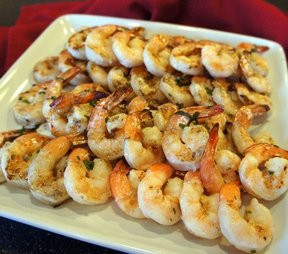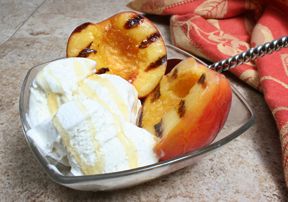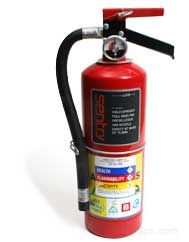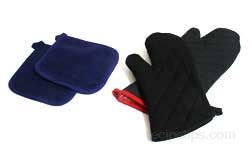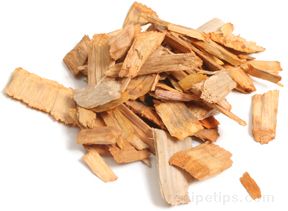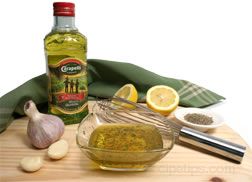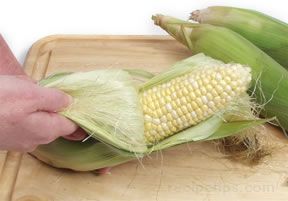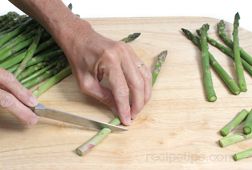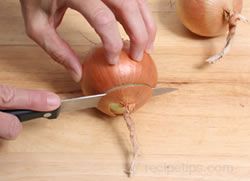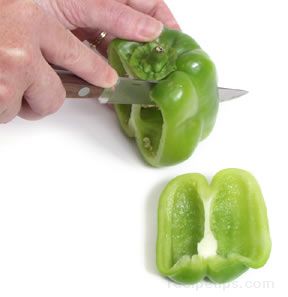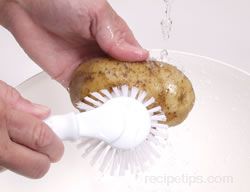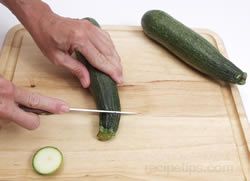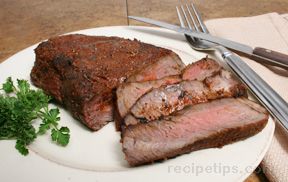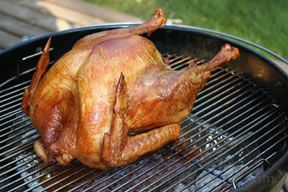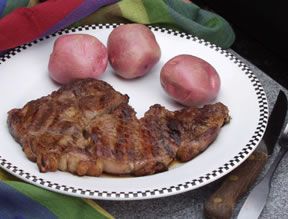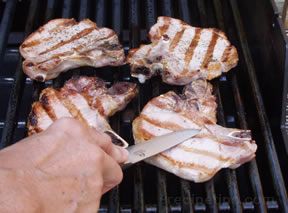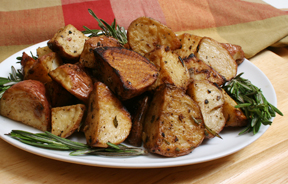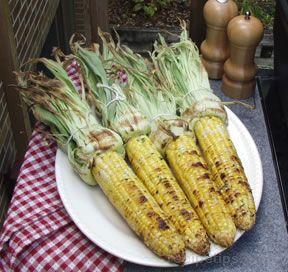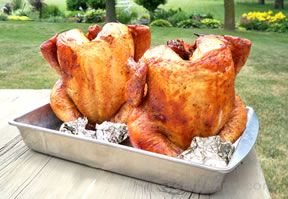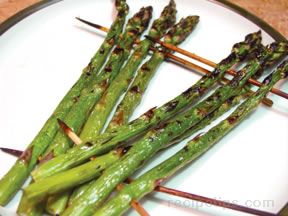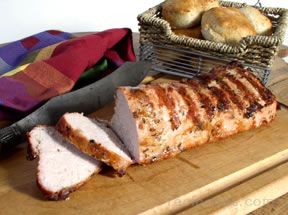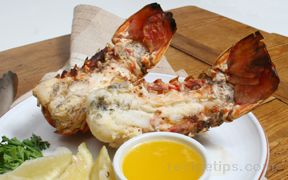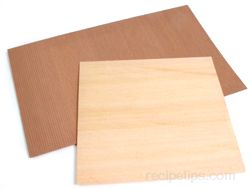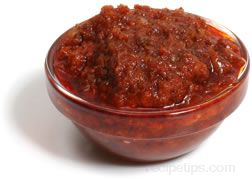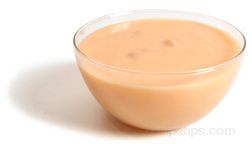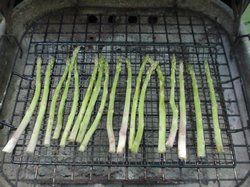|
Shellfish - Crustaceans | Shellfish - Mollusks | Food Safety
The flavor of shellfish benefits significantly from grilling. Removing the shellfish from the grill before they become too well done and rubbery is the biggest challenge. Watching closely for the shellfish to turn opaque (non-transparent), removing it from the grill and serving immediately is key. The following is a quick reference for buying, preparing, grilling, and safe storage of shellfish. Shellfish can be purchased in a variety of forms that include live, frozen, pre-cooked and frozen, or freshly cleaned by your fishmonger (fish dealer). Having your fishmonger prepare live shellfish will make the grilling process easier. If you prefer to prepare and clean the shellfish yourself, some direction is provided.
Shellfish are classified into two main categories, Crustaceans and Mollusks. Crustaceans have hard outer shells and jointed appendages. Mollusks are soft bodied with no internal skeleton. Sub categories of Mollusks are univalve, bivalve, or cephalopods.
Shellfish - Crustaceans
Shrimp | Crab | Crawfish | Lobster - Whole | Lobster - Tail
Shrimp
| Shrimp |
|
Buying Hints:
Fresh fish should smell clean and not have an ammonia scent."Refresh" frozen shrimp by soaking in salted water, 1 to 2 tbsp of salt to 1 quart of water. |
|
Preparation:
Remove Shell: (optional)
- Starting at the legs of the shrimp, peel shell back.
- Pinch bottom of the shell to pop shrimp.
- Your personal preference dictates whether to leave tail on or off.
Deveining:
If you do not have a deveining tool, butterfly the shrimp.
- Start by making a cut diagonally on the back of the shrimp. The cut should be approximately ¼ inch deep.
- Cut again, diagonally, forming a V cut. Remove the vein.
For detailed information on preparing shrimp, see
Fish - Shellfish - How to Prepare and Devein Shrimp |
Grilling Method:
Direct grilling method, medium to hot grill.
Because of the size of shrimp, threading shrimp onto skewers or using a grill basket is essential. Use two skewers to prevent shrimp from spinning. Remember to soak wooden skewers for a minimum of 30 minutes before grilling.
Grill each side of shrimp for 3-4 minutes, depending on thickness of shrimp. Baste with butter to prevent meat from drying out. |
|
Check for Doneness:
Shrimp meat turns opaque when done. |
Crab
| Crab |
|
Buying Hints:
When purchasing live, the crabs should be active and clean. Choose crabs that feel heavy for their size. If you prefer the claw meat, purchase male crabs. If you prefer the body meat, purchase female crabs. |
|
Preparation:
There are hard shell and soft shell crabs.
Soft shell crabs have recently shed their outer hard shell. The remaining soft shell is edible and you can grill the crab whole.
To prepare live crab for grilling:
- Cut the eyes and mouth off the front of the crab, killing it instantly. A kitchen shears works best.
- The crab must then be turned on its back and the tab (referred to as an apron) must be pulled off the belly.
- Turn crab back over, peel back the carapace (back shield) on each side and cut out the gills using a paring knife. Wash crab with clean, cold, running water before placing on grill.
You can also submerge the crabs into boiling water, head first, to kill the crab before trimming.
Hard Shell Crabs
To prepare live crab for grilling, first kill the crab by submerging it in boiling water and removing within 15-30 seconds. Hard shell crab meat should be removed from crab before grilling to ensure even cooking. The shell can be replaced after crab meat is finished cooking and has been removed from the grill. |
Grilling Method for Hard and Soft Shell Crabs:
Direct grilling method, medium to hot grill.
Grill 2-5 minutes on each side, turning only once. If grilling with shell on, dip the crab in melted butter (seasoned if you like) before placing it on the grill to crisp the shell. To keep meat from drying out, continue to baste with butter. |
Check for Doneness:
Soft shell crab turns a deep red and meat turns opaque when done.
Hard shell crab meat (grilled without shell) will turn opaque when done. |
Crawfish
| Crawfish (Crayfish) |
|
Buying Hints:
When purchasing live, buy crawfish that are active and heavy for their size. |
|
Preparation:
- Prepare crawfish by submerging, headfirst, into boiling water. Remove within 15-30 seconds.
- Lay crawfish belly side up.
- Using a sharp knife, cut through the shell of the body beginning at the head and finishing at the tail, this allows the heat to penetrate through the shell to grill meat evenly.
- Remove the intestines, a thin looking vein running the body of the crawfish.
- Remove the sack located behind the eyes.
- Crack the shell on the legs of the crawfish to allow heat to penetrate.
- Rinse thoroughly with cold water.
- Place on grill.
|
Grilling Method:
Direct Grilling method, medium to hot grill.
Place crawfish cut side up and grill 2-5 minutes until shell turns bright red, then flip over to grill uncut side of crawfish. When grilling with shell on, dip in melted butter (seasoned if you like) before placing on the grill to crisp the shell, and baste with butter to prevent meat from drying out.
|
|
Check for Doneness:
Crawfish is done when shell turns bright red and meat is opaque. |
Lobster - Whole
| Lobster (Whole) |
|
Buying Hints:
When purchasing live, watch for activity such as the tail of the lobster curling tightly underneath the body when picked up. Female lobsters have a meatier tail. To identify male and female, view bottom of the lobster and find the tiny set of legs that are located at the point where the tail of the lobster starts. The male lobster legs are thick and stiff while the female legs are soft and delicate. |
|
Preparation:
To kill a live lobster, submerge head first into boiling water or place the blade of a sharp knife in the center of the lobster's head, inserting tip of blade between the eyes. The lobster can now be grilled whole. If you prefer, the lobster can be cut in half from the head to the tail. After splitting, remove the sack from the lobsters head and remove the veins running through to the lobsters tail before grilling. |
Grilling Method:
Direct Grilling method, medium to hot grill.
Place whole lobster back-side down on grill. Lobster is ready to turn when shell has turned a bright red. Turn and grill an additional 3-5 minutes until done. Split lobsters should be placed on the grill with the cut side down. Grill 3-5 minutes or until shell turns a bright red. Turn lobster over and baste with melted butter to prevent meat from drying out. Leave lobster cut side up for an additional 4-8 minutes more. |
|
Check for Doneness:
Lobster meat turns opaque when done. You can also check for doneness by lifting the back shell of the lobster. The liver (which is normally green) should be thick like a pudding. |
Lobster - Tail
| Lobster (Tail) |
|
Buying Hints:
Most often, lobster tails are bought frozen. |
|
Preparation:
- Thaw a lobster tail by placing it in the refrigerator overnight. To thaw more quickly, enclose lobster in waterproof plastic bag and place in a sink with cool running water. Allow about 30 minutes per pound.
- To grill a lobster tail, the tail should be butterflied by cutting the shell and meat in half, lengthwise. Do not cut through the bottom of the shell.
- Spread lobster into a butterfly position.
|
Grilling Method:
Direct grilling method, medium to hot grill.
Lobster tails should first be placed cut side down on grill. Grill 3-4 minutes. Turn and grill an additional 5-10 minutes until done. Baste with melted butter to prevent meat from drying out. |
|
Check for Doneness:
Lobster meat turns opaque when done. |
Shellfish - Mollusks
Clams and Mussels | Oysters | Scallops | Squid
Clams and Mussels
| Clams and Mussels |
|
Buying Hints:
Smaller clams/mussels are better for grilling. Small clams/mussels are tender, while larger clams/mussels can be chewy. |
|
Preparation:
Do not grill if clam/mussels are cracked.
- Using a stiff brush, scrub the outside shell with cold water until completely clean.
- Remove any threads that may be at the hinged area of the shell. These threads are sometimes referred to as a beard and are found more often on mussels than clams. To remove, simply pull the threads with your fingers or pliers. You may need to pull hard to remove.
For detailed information on preparing clams and mussels, see
Fish - Shellfish - How to Prepare and Open Clams and
Fish - Shellfish - How to Prepare and Open Mussels |
Grilling Method:
Direct grilling method, medium to hot grill.
Wash clams/mussels under cold running water. Cleaned clams/mussels can be placed directly on the grill grate. They should be placed with the deep side of the shell down. If grilling a large number of clams/mussels, place them on a separate grate that can be placed directly on the grill. When using the separate grate, cooking time may increase. Grilling times will vary from 2 to 8 minutes depending on the size and thickness of the shell. When shells pop open, they are safe to eat. Clams have thicker shells than mussels and will take longer to pop open. Discard any clams/mussels that failed to open. |
|
Check for Doneness:
Shells open when cooked. Edges of meat curl and turn opaque when done. A mixture of melted butter and preferred seasonings can be drizzled over clams/mussels before serving. |
Oysters
| Oysters |
|
Buying Hints:
Buy oysters that are closed tightly and do not smell overly fishy. To check for freshness, tap the oyster to see if it will close its shell. |
|
Preparation:
- Discard oysters that have cracked shells or are sticking together.
- Rinse under cool water to clean the outer shell.
For detailed information on preparing oysters, see
Fish - Shellfish - How to Prepare and Open Oysters |
Grilling Method:
Direct Grilling method, medium to hot grill.
Place oysters with deep side down directly on the grill grate. Grilling time can range from 4 to10 minutes. |
|
Check for Doneness:
Shells pop open when cooked. Edges of meat curl and turn opaque when done. Discard oysters that did not open. |
Scallops
| Scallops |
|
Buying Hints:
Scallops are rarely sold live because they are highly perishable. Look for shucked scallops that are firm, a sour smell indicates spoilage. |
|
Preparation:
- Prepare scallops for grilling by cutting off the curved shaped appendage that is attached to the body. Most often, this appendage has been removed before purchase.
- Marinating them in a favorite oil will help to prevent the tendency of scallops to dry out.
|
Grilling Method:
Direct Grilling Method, medium to hot grill.
If scallops are small, you may want to place in a grate or thread with skewers. Two skewers work best, preventing meat from spinning while turning on the grill. Cook for 2-5 minutes on each side, depending on size of scallop. |
|
Check for Doneness:
Meat will turn opaque when done |
Squid
| Squid (Calamari) |
|
Buying Hints:
When buying squid, look for eyes that are clear and full. The skin should not be torn and the meat firm. Fresh squid is cream-colored with reddish brown spots; Squid, although not surrounded by an outer shell, is considered a mollusk. The squid has a hidden shell called the gladius that is found inside the meat of a squid. |
|
Preparation:
- If you have purchased fresh, unprepared squid, the first step in cleaning is to hold the squid's head and pull it apart from the body. Doing this should remove most of the inside of the squid. Be very careful not to break the ink sack.
- After head has been removed, clean any remaining innards from the inside of the cavity of the squid by rinsing the outside and inside cavity with cold running water.
- The squid can now be cut into rings or grilled as is.
- If grilling larger squid, remove the skin. The skin tends to toughen on larger squid.
|
Grilling Method:
Direct Grilling method, medium to hot grill.
A grill basket may be needed. Cook from 3-6 minutes on each side, depending on size of squid. Like most shellfish, squid tends to dry out so brushing with butter or other oil-based marinade will keep squid from becoming rubbery. |
|
Check for Doneness:
Meat will turn opaque when done. |
Food Safety:
- Oil grates with non-stick spray (or brush oil on grates) before starting grill to prevent a fire from erupting.
- Always wash hands with soap and water before and after handling raw or cooked shellfish.
- Before grilling, rinse seafood in cold running water to remove bacteria.
- All surface areas that have been used in the preparation of raw shellfish should be sanitized. Do not allow any non-sanitized surface to come in contact with cooked shellfish.
- Eating raw or undercooked shellfish can be dangerous, grill shellfish until the fish becomes opaque (raw fish is translucent).
- If shellfish will not be prepared immediately after purchase, they should be stored in the coldest area of your refrigerator for 1 to 2 days. It is safest to grill immediately after purchase.
- Live shellfish should be kept in a shallow container, covered with damp paper towels. Do not store in water or airtight containers which will suffocate the shellfish.
- Store shrimp, squid, and shucked shellfish in a sealable plastic storage bag or a covered plastic or glass container.
- Serve shellfish immediately after removing from the grill. If there are leftovers, refrigerate within 1 hour. Eat refrigerated leftovers within 1 to 2 days.
- Do not allow raw shellfish to come in contact with cooked shellfish.
- Signs of spoiled shellfish may include a strong odor and/or color changes. Strong ammonia smell is common in spoiled shellfish. If uncertain, discard the shellfish.
|

